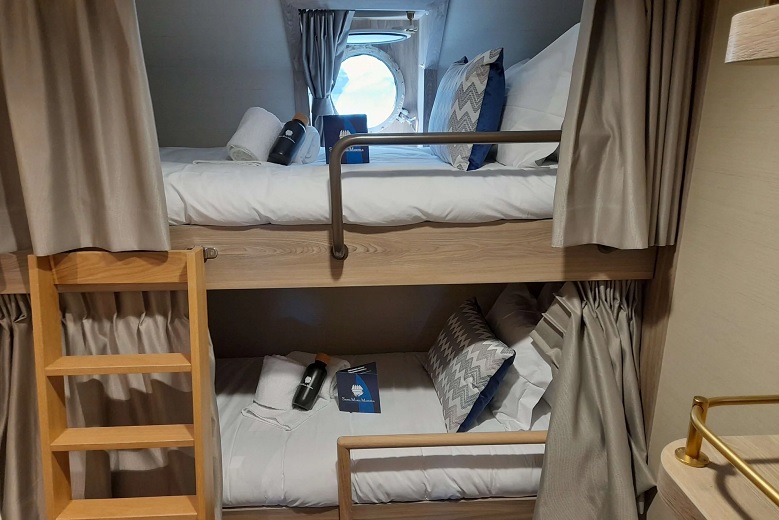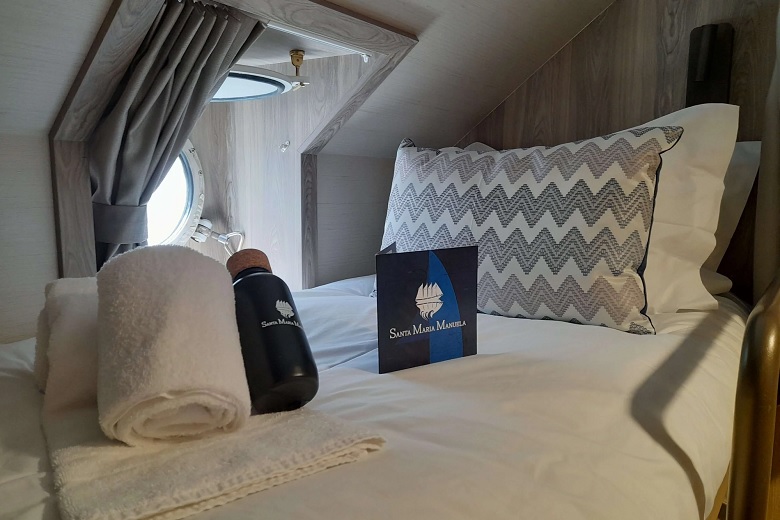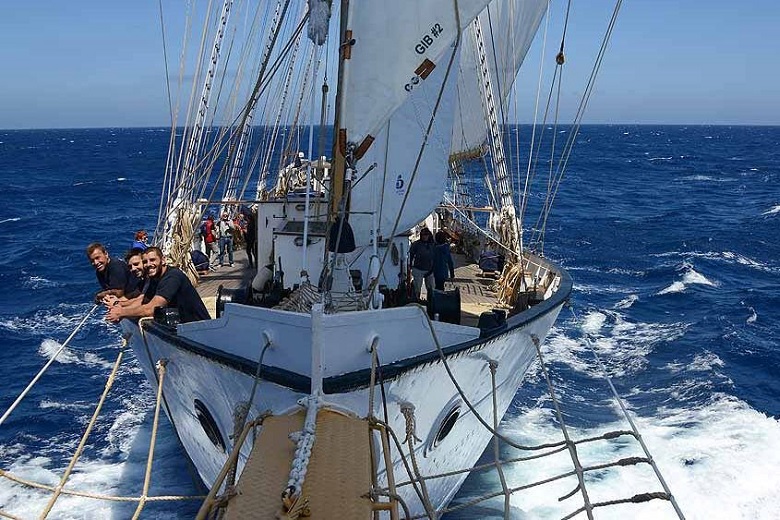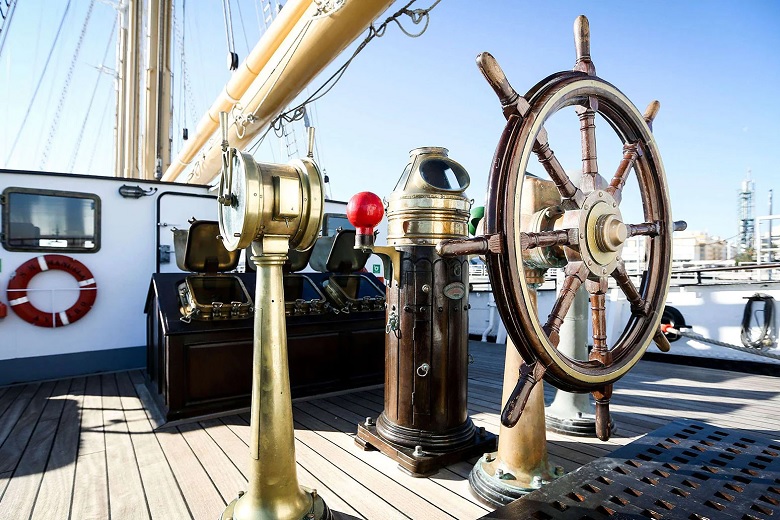Description
Built in 1937 by the Companhia União Fabril (CUF) in Lisbon, the Santa Maria Manuela is a four-masted schooner emblematic of the Portuguese cod fleet. Initially designed as a cod fishing vessel, it sailed for over two decades on the banks of Newfoundland in Canada, representing Portuguese maritime expertise.
History
Built in 1937 by the Companhia União Fabril (CUF) in Lisbon, the Santa Maria Manuela is a four-masted schooner emblematic of the Portuguese cod fleet. Initially designed as a cod fishing vessel, it sailed for over two decades on the banks of Newfoundland in Canada, representing Portuguese maritime expertise.
During its fishing career, the vessel was operated by various fishing companies, including that of Viana do Castelo until 1963, and then by the company Ribau from Aveiro. In 1993, then considered obsolete, the ship seemed destined for destruction. However, her story was not over.
In 1994, a group of public institutions bought its shell and created the Santa Maria Manuela Foundation with the initial objective of maintaining the traditional profession of cod fishing. After the hull was sold to Pascoal & Filhos in 2007, the ship underwent a complex restoration process.
The restoration took place in two phases: first at the Navalria shipyard in Gafanha da Nazaré for the hull, then at the Factoria Naval Marin shipyard in Galicia for the equipment. In May 2010, the Santa Maria Manuela returned to the port of Aveiro, transformed and ready for a new life.
Today, the ship is mainly used for cultural tourism and participates in numerous international maritime events. In particular, it has been present at the Tall Ships' Races, at the Armada in Rouen, at the Fêtes Maritimes in Brest, and continues to fascinate the public with its history and beauty.
A survivor of the Portuguese cod fleet alongside the Creoula, the Santa Maria Manuela is now a living ambassador of Portuguese maritime heritage, sailing between historical memory and contemporary adventure.















